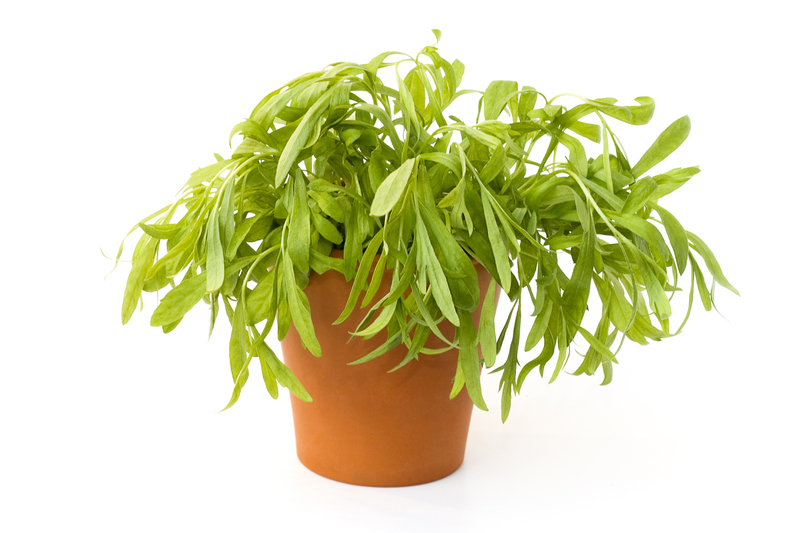Navigate the wind maze: Effective garden protection tips
Posted on 26/06/2025
Navigate the Wind Maze: Effective Garden Protection Tips
Gardening is a rewarding endeavor, but strong winds can quickly turn your flourishing landscape into a battleground. Whether your garden is a tranquil urban oasis or a vast countryside plot, wind exposure can cause significant damage to your plants, trees, and structural elements. Learning how to navigate the wind maze is crucial for effective garden protection. In this extensive guide, you'll discover actionable strategies, innovative ideas, and expert tips to safeguard your green space from the unpredictable power of the wind.
Why Is Wind Protection Important for Gardens?
The wind is more than just a force that ruffles leaves; it can affect plant growth, moisture retention, pollination, and even the structural integrity of your garden features. High winds can:
- Break stems and branches, particularly on young or brittle plants.
- Accelerate soil erosion, removing critical topsoil and nutrients.
- Increase water loss through transpiration and evaporation.
- Disrupt pollinators and other beneficial insects' activity.
- Dislodge mulch or decorative stones, making your garden untidy.
Understanding these risks underscores the importance of effective garden wind protection strategies. When you navigate the wind maze with practical measures, you create a safer, more stable environment for your plants to thrive.

Identifying Wind Patterns in Your Garden
Before you can defend your garden, you must understand the enemy. Knowing the prevailing wind direction, seasonal gust patterns, and vulnerable spots in your yard is the first step towards crafting an effective wind protection plan for your garden.
Map Your Microclimates
- Observe wind flow by watching how leaves, lightweight debris, or even wind chimes react throughout different times.
- Note obstacles such as fences, buildings, or hedges that alter wind speed and direction.
- Identify sheltered and exposed areas in your landscape.
Once you recognize your garden's wind corridors, you can tailor your protection solutions for maximum effectiveness.
Practical Garden Wind Protection Solutions
1. Strategic Planting: Natural Windbreaks
This time-tested method uses trees, shrubs, and hedges to dissipate wind energy before it reaches your delicate plants.
- Layered Planting: Plant rows of tall trees or fast-growing shrubs as an outer shield. Follow with mid-sized bushes and dense ground covers closer to vulnerable beds.
- Evergreens vs. Deciduous: Combine evergreen species (for year-round shelter) with deciduous plants (which offer protection in the growing season).
- Native Choices: Select species well-adapted to your climate and soil, reducing maintenance and encouraging biodiversity.
Tip: Avoid planting windbreaks too close to your beds, as roots may compete for resources. Aim for a distance of at least 10-15 feet between mature trees and garden areas.
2. Artificial Barriers: Fencing and Screens
When nature alone can't shield your garden, sturdy man-made windbreaks come to the rescue. Options include:
- Permeable Fencing: Lattice panels, slatted wood, or mesh screens diffuse wind, preventing harmful turbulence caused by solid barriers.
- Living Walls: Vertical gardens or trellised climbers offer dual benefits of wind reduction and aesthetic beauty.
- Temporary Screens: Use fabrics like burlap or shade cloth attached to stakes during particularly stormy seasons.
Remember, a wind barrier that blocks 50-60% of the blow is more effective than a completely solid wall, as it gently redirects rather than deflects turbulent currents downward into your plants.
3. Protective Structures for Individual Plants
- Cloche Covers: Place domed covers made of glass, plastic, or mesh over seedlings or sensitive flowers to shield them from gusts.
- Row Covers and Tunnels: Lightweight agricultural fleece or mesh nets help protect rows of fragile vegetables.
- Staking and Tying: Use strong garden stakes and soft ties to support tall perennials, tomatoes, or young trees. Stake against the prevailing wind to minimize movement.
4. Mulching and Ground Cover Tactics
Exposed soil is vulnerable to being swept away by wind. Battle erosion by:
- Applying Heavy Mulch: Use bark chips, stones, or straw (secured with mesh if needed).
- Dense Planting: Ground-hugging plants and creeping perennials provide living armor for vulnerable earth.
5. Creative Solutions for Windy Gardens
- Plant in Raised Beds: Walls can offer an additional layer of protection.
- Wind-Smart Garden Design: Curve paths, plant staggered shrub rows, or use berms to break up wind corridors.
- Move Containers: Place pots in sheltered spots or gather them together to reduce exposure.
Innovative Products for Wind Maze Management
A variety of modern tools can help you protect your garden from the wind maze:
- Wind Protection Netting: Durable netting provided in various heights for fences or around vegetable beds.
- Expandable Plant Protectors: Flexible cages or sleeves to support growing plants.
- Soil Anchoring Pins: Essential for securing mulch, landscape fabric, or lightweight protective covers.
- Heavyweight Plant Pots: To prevent tipping in exposed areas.
Must-Have Features in a Wind-Resistant Garden Product
- UV Stabilization: Ensures durability in all weather conditions.
- Easy Installation: Look for products that can be erected or repositioned as needed.
- Reusable: Choose high-quality, eco-friendly, and sustainable materials to reduce waste.
Long-term Strategies for Windproof Gardening
Resilience is the key. True wind management is a blend of smart planting, adaptable barriers, and ongoing assessment. Effective garden wind protection is an investment in your landscape's future.
Soil Improvement
- Healthy, rich soil with plenty of organic matter anchors roots and reduces erosion risk.
- Raised beds or terracing can help on slopes prone to wind-scouring.
Choose Wind-Tolerant Plants
- Go for native grasses, tough perennials, and fibrous-rooted species known for flexibility.
- Seek dwarf or compact cultivars for exposed areas, as they're less likely to snap.
Frequent Maintenance
- Regularly inspect for wind damage and prune trees to remove weak or diseased branches before storms arrive.
- Reinforce or replace any worn-out wind barriers or garden structures.

FAQ: Solving Common Wind Garden Dilemmas
How do I know if my garden is too windy for certain plants?
Observe for repeated windburn, persistent leaf tattering, or snapped stems. Consult local extension services or nurseries for plant suitability based on your wind exposure. If in doubt, opt for wind-hardened varieties and build gradual protection steeply exposed gardens.
Can I make my own windbreak if I have limited space?
Absolutely! Even a simple trellis covered with climbers, or strategically placed tall containers, can break up wind flow. In small yards, folding screens or temporary shade cloth panels work wonders during critical periods.
Will a solid fence provide better protection than a mesh or slatted one?
No. A permeable fence (slats or mesh) allows some wind to pass through, reducing turbulence. Solid barriers often cause harmful eddies that can damage plants directly behind the wall.
Which trees and shrubs make the best windbreaks?
- Evergreens: Yew, holly, pine, juniper, and arborvitae.
- Deciduous: Hawthorn, hornbeam, willow, and hazel.
- Check with your local nursery for native options as these generally require less input and thrive with greater resilience.
Conclusion: Master the Wind Maze for a Healthier Garden
Facing the challenge of wind doesn't mean surrendering your dream landscape. By learning to navigate the wind maze, employing both natural defences and clever solutions for effective garden protection, you can transform even the blusteriest plot into a sheltered paradise.
Key Takeaways:
- Analyze and understand your unique wind patterns before acting.
- Mix living windbreaks, physical barriers, and plant supports for layered defense.
- Choose resilient plants, nurture healthy soil, and maintain regularly for ongoing success.
Embrace these tips, and your garden will not only survive the wind--but flourish in its wake.
```
